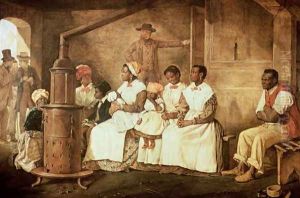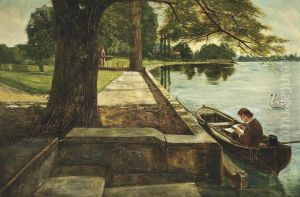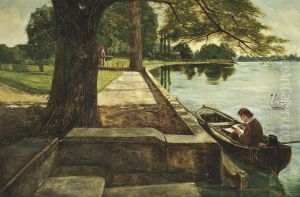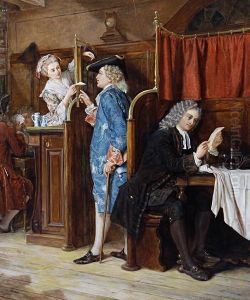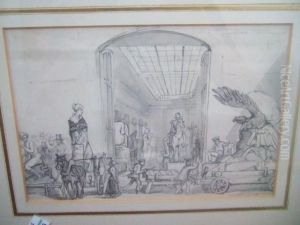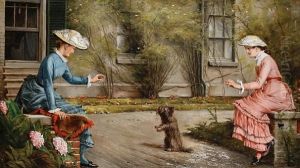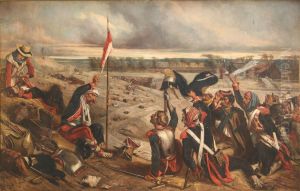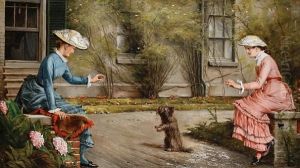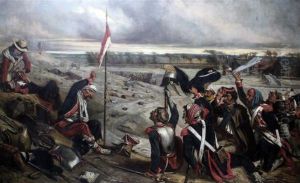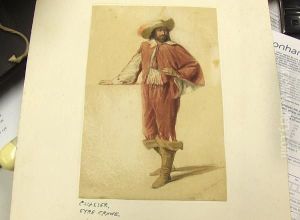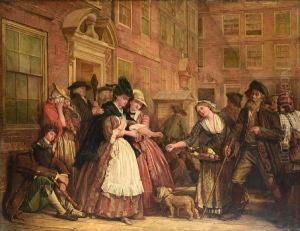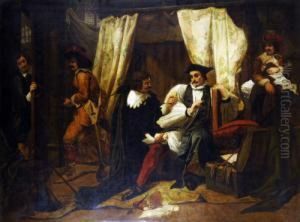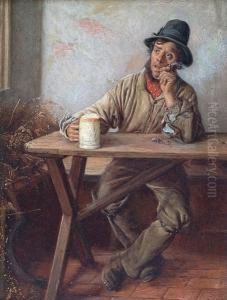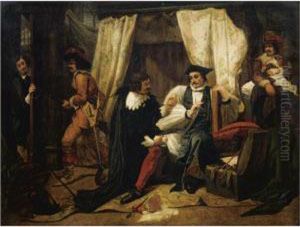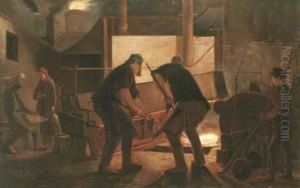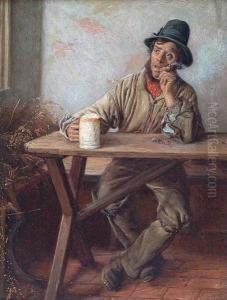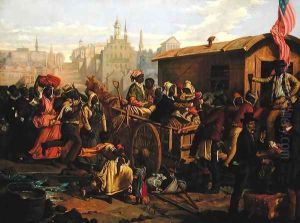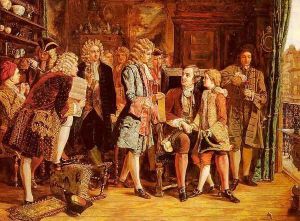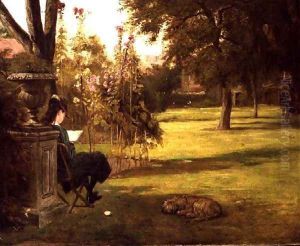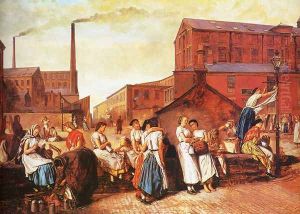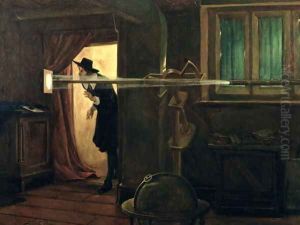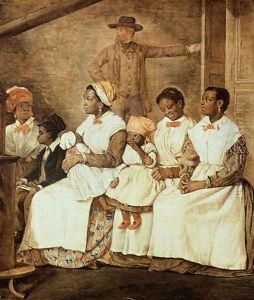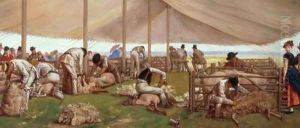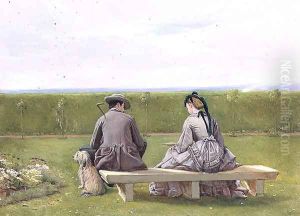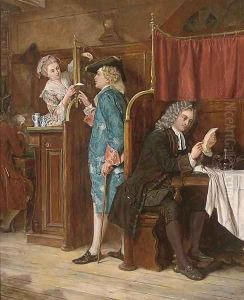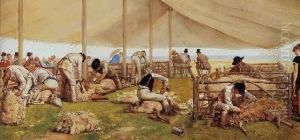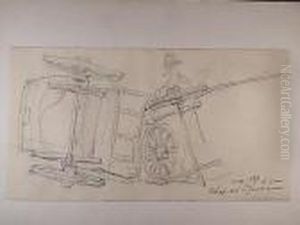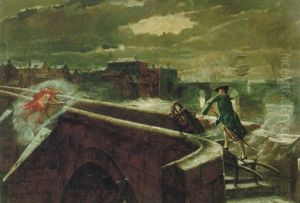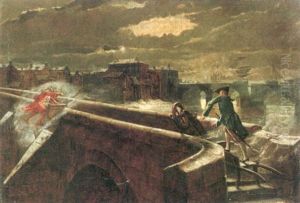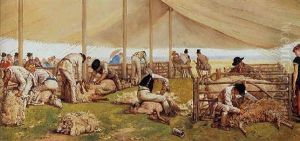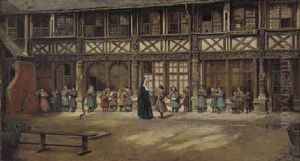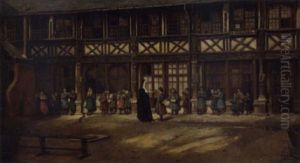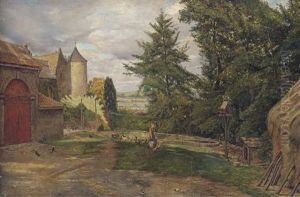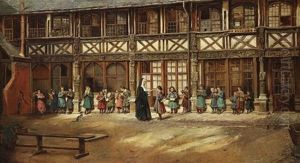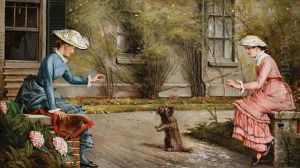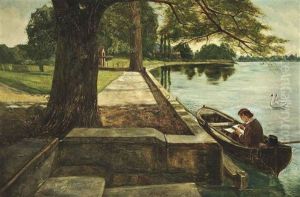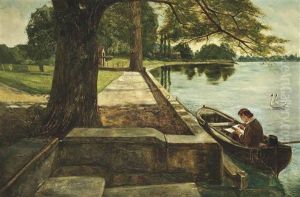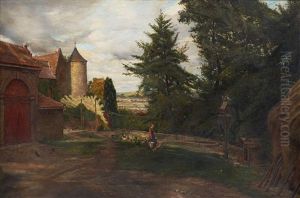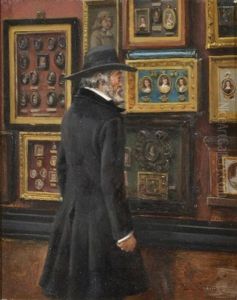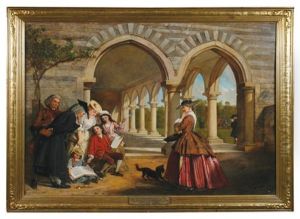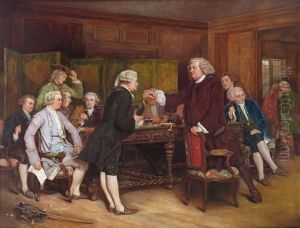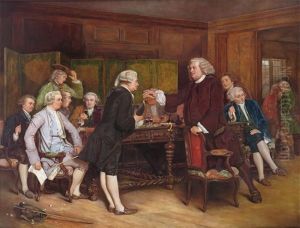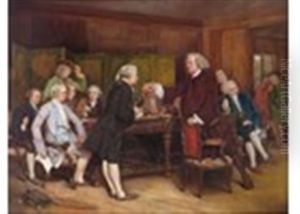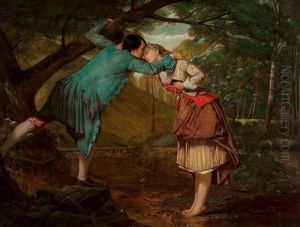Eyre Crowe Paintings
Eyre Crowe ARA was a British painter, born on March 25, 1824, in London, England. He was the second son of the renowned journalist and writer Eyre Evans Crowe. Having shown an early interest in art, Crowe began his formal training at the age of 12 when he entered the Paris studio of Paul Delaroche, where he had the opportunity to work alongside the young Jean-Léon Gérôme, who would also rise to prominence.
Crowe's early experiences in Paris would have a lasting influence on his art. He was present during the dramatic historical events such as the July Revolution of 1830 and the subsequent rise of Louis-Philippe to the French throne. These events, along with his travels through Europe, particularly his visits to slave markets in Greece and Constantinople, inspired many of his later paintings.
After his time in Paris, Crowe returned to England where he continued his artistic endeavors. He exhibited at the Royal Academy for the first time in 1846, and he would become a regular contributor to the Academy's exhibitions. His early works often depicted scenes from literature and history, including works inspired by the writings of Charles Dickens, whose social commentary likely resonated with Crowe's own interests in social issues.
Throughout his career, Crowe was known for his genre paintings, which often conveyed social and moral messages. His works such as 'Slaves Waiting for Sale' (1853) reflected his abolitionist sentiments and highlighted the injustices of slavery. He was also recognized for his illustrations, including those for Thackeray's works, which brought him additional acclaim.
In 1876, Crowe was elected an Associate of the Royal Academy (ARA), an acknowledgment of his contributions to British art. He continued to paint and exhibit until well into his later years, with a particular focus on historical and genre subjects that reflected his deep interest in social issues and human stories.
Crowe's legacy is marked by his commitment to social realism and his ability to capture the nuances of human emotion and society in his work. He died on February 12, 1910, in London, leaving behind a body of work that offers insight into the social consciousness of the Victorian era.
